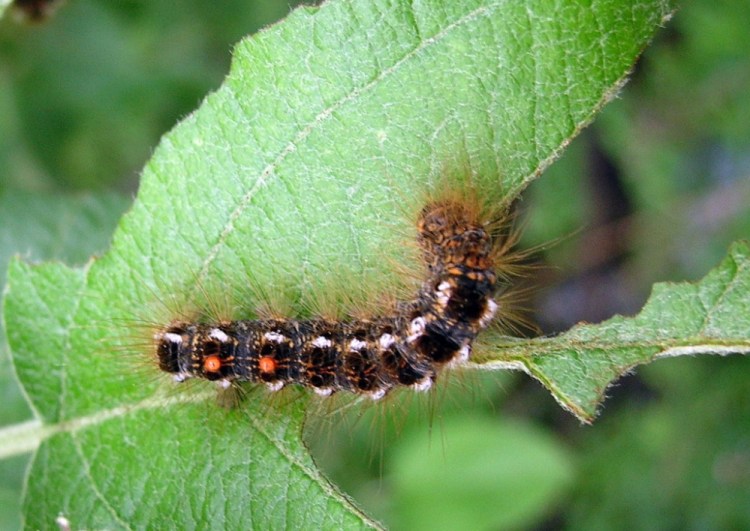HARPSWELL — A professor of entomology at the University of Maine focused on the discovery of a fungus that kills browntail caterpillars when she met with selectmen Tuesday in a special workshop.
Mary Ann Nahf, chairwoman of the Conservation Commission, was also present at the Nov. 28 workshop, where Eleanor Groden’s browntail moth research was discussed.
Groden is the director of UMaine’s Browntail Moth Research Project, which is being conducted in collaboration with the Maine Forest Service. It aims to pinpoint the underlying cause of the browntail outbreak throughout the state, and develop environmentally friendly treatments.
Poisonous hairs on browntail caterpillars can cause mild to extreme allergic reactions in humans, ranging from a rash similar to poison ivy to serious respiratory problems in some people.
Given Harpswell’s strict pesticide ordinance, which prohibits spraying pesticide within 25 feet of the shoreline, and its ban on aerial spraying of the chemicals, residents have been urged to clip browntail moth nests from trees during the winter to reduce the infestation. After clipping, soaking the nests in soapy water prevents the caterpillars from hatching in the spring.
Town Administrator Kristi Eiane said she, the Board of Selectmen and Nahf invited Groden to speak in the hope that Groden might have some suggestions for the town about better management practices.
During the workshop, Groden talked about the discovery of a specific type of fungus that kills the caterpillars when it comes into contact.
She said while it could be effective at naturally reducing the caterpillars’ number in areas like Harpswell, she doesn’t see much potential for commercial distribution of the fungi. The amount of fungi produced in any one area is heavily dependent on weather.
“I don’t see that as a viable management practice, outside of (sampling it),” Groden said. “The only other thing people have tried with this fungus and similar fungi, and it’s worked with gypsy moth, is they have spread it around.”
Groden used the example of Bowdoinham, which currently has a large amount of the fungus, and said if people were to go there and bring the fungi back to Harpswell, it could be a management option, though not a very sustainable one.
“I don’t even think that makes sense because I know you already have it here (in Harpswell); I’ve seen it here,” Groden said. “So that’s not long term.”
Groden said her team currently has roughly 1,000 caterpillars collected from a variety of areas throughout the state stored at the university in an ultrafreeze. This winter, the scientists will use a molecular probe to deduce how much of the fungi is on the caterpillars from different places.
She added the research is federally funded, partially through the United States Department of Agriculture. The group received funding for a year from the USDA, which will carry it through this winter. Other federal money granted to the university also helps fund Groden and her students’ work.
When asked by Selectmen David Chipman how much money she would need from the town to conduct the same research in Harpswell, Groden gave a rough estimate, saying it would likely cost between $6,000 and $8,000.
Eiane said the town would need a descriptive proposal from Groden as soon as possible to submit to the budget committee sometime next month.
See this story in The Forecaster.
Elizabeth Clemente can be reached at 781-3661 ext. 100 or eclemente@theforecaster.net. Follow Elizabeth on Twitter @epclemente.
Send questions/comments to the editors.



Comments are no longer available on this story